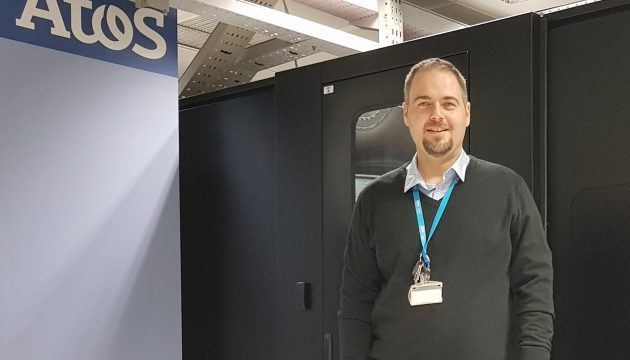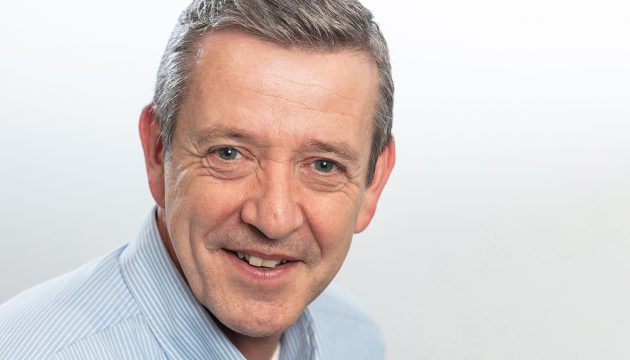The Paris agreement has resulted in tighter regulations on energy consumption and CO2 emissions in many countries throughout the world. Consequently, performance as a function of power consumption is a key criterion for mobile network operators when they procure 5G equipment. Hardware vendors must provide the most efficient solutions possible to be successful in this environment. What that means for the power architecture can be different from case to case, but the main factors are always heat, performance, and size.
Buildouts are gaining momentum
In 2020, we’re seeing the first 5G networks launch. Buildouts will continue over the coming years and they will involve more than just deploying upgrades to the existing network. Some of the challenges here include getting operators, vendors, and equipment manufacturers on the same page regarding the technical details of its deployment. We can expect to see mass adoption of 5G across major European networks and a large portion of consumer handsets by 2025. For now, smartphone manufacturers have begun releasing handsets for early adopters and networks are promoting their first 5G plans even though coverage may be limited at first.
Once 5G networks have reached widescale deployment, they will use a great number of smaller cells such as micro cells, pico cells, and femto cells. Some market studies indicate that 40% of operators will deploy 100-350 small cells per square kilometre in urban areas. With so many more antennas and base stations, the efficiency of each individual component becomes even more important.
The core network must also become more efficient
The radio access network is not the only place upgrades are required. 5G core networks have data centres that run around the clock, 365 days a year. With data transfer quantities set to grow rapidly with this network generation, additional power consumption from such facilities will factor heavily into network operating expenses.
As with the radio access network, efficiency is extremely important here. The more efficient a power module is, the less heat it generates. In a data centre or cell site, heat must be removed to keep equipment functioning at peak performance. Air conditioners are one way to accomplish this, but they consume electricity, too. With energy prices set to continue rising, highly efficient components and power solutions that require less cooling are necessary. The scale of the upgrades required to complete 5G buildouts, however, means that the cost of those capital expenditures is also very significant.
Building your own solution using discrete components
Some of our customers have their own teams of engineers working on power architectures. In some cases, they have sourced discrete components and assembled them to get the performance they require at the lowest possible cost. This can be a low-power regulator or DC-DC module or a non-isolated module in combination with other discrete components. We’re seeing these types of solutions in the very low-power segment with components that are not life-rated. You can’t compare something like that with a fully assembled, tested, rated, certified, and complete module. For 5G, it’s important to consider that not only does a component failure mean quality of service declines in that area, it also requires a site visit, causing increased operating expense.
Designed for you
Many of our customers don’t have a power design team in house. They really need a partner to provide recommendations and support. In cases like these, we share as much information as possible. Some customers do have power design teams. Maybe they don’t have the internal resources to design their own power supply, but they can do a DC-DC converter, for example. I’m lucky to work in an organization that has 9000 engineers around the world, so we’re a bit unique in our ability to support both types of customers across the entire power architecture.
A typical inquiry
Many customers will come to us asking for a DC-DC converter that takes 48V and outputs 12V at 3 amps, so somewhere around 50 watts. Just looking at the data sheet, we have several solutions that will fit the bill. But it’s very important to really try to understand how the customer intends to use our module. If it will be exposed to high temperatures, that means there may be some derating, which means real-world output could be less than nominal output. So, we ask questions about the operating environment, will there be airflow? How will the module be mounted? Is the PCB on a cold wall or is some kind of mechanical cooling planned? Is this a closed box?
Then we take the information the customer gives us and check our specifications to make sure our module can still deliver the required power in the worst-case scenario. We might suggest a 5-amp model, for instance, so we can be sure that the required 3 amps are available even if the module is exposed to high temperatures at times. That’s important, because if the DC-DC converter can’t deliver the required power, the board won’t work. A small cell shutting down can mean customers don’t have service. That’s why these types of converters are critical components.
Second sourcing and DOSA
One of the most important recent trends affecting telecommunications power solutions is second sourcing. Customers are implementing second sourcing strategies to increase the reliability of their supply chains for the future. Many suppliers (including Delta) have joined the Distributed-Power Open Standards Alliance (DOSA) Alliance to support compatibility and standardization of DC-DC board-mounted converters. With effective standards in place, multi-vendor compatibility is a lot easier to achieve.
The advantage of one-stop shopping
There are many suppliers of power solutions and components on the market competing on price and performance. But there are other considerations when deciding where to source components for a 5G buildout. Some suppliers will have more limited technical support capabilities than others. In complex networks like 5G radio access and core networks, it can be beneficial to have suppliers that offer everything from very high-power modules down to the smallest components.
When a customer inquires about a DC-DC converter, for instance, I’m thinking, ok, so where is the 48-volt coming from? Do you already have a 48V power supply? Can we support you here? Do you need a cooling solution? Do you need fans? I need to understand the complete architecture and, often, we can provide a complete power solution that includes cooling and fans.
Not only does this save the customer time when it comes to procurement, it also avoids a lot of headaches that can happen when components from different suppliers don’t interact as anticipated. Valuable time can be wasted investigating who is responsible for the fault. When all the components come from a single vendor, in contrast, there are fewer problems in the first place. Should a problem nevertheless arise, resolving it is usually a much simpler matter.
The benefits of research and development
Although maybe not quite as sexy as central processing units, power electronics technologies also advance at a rapid pace. For instance, our high power density DC-DC converters in a 1/16th brick form factor were rated at 100 watts just a few years ago. We’ve been able to double that to 200 watts now, which means a big space savings. But the greatest benefit that comes when companies like ours really invest in research and development (we put 6-7% of revenues into R&D) is the improved efficiency we can deliver. That’s important for telecommunications providers when you consider the emissions regulations and how energy costs will rise dramatically in the future. Without greater efficiency, operating costs could become prohibitively expensive.
Look for the right partner, not just the right module
An ideal scenario for telecommunications hardware designers and data centre managers is to find a partner who is able to not only supply rightsized modules and components but one who can also provide whatever support is necessary during (and after) the development phase. The global nature of 5G means it’s important to also have access to trained service technicians all around the world, both during and after deployment.
Consequently, the purchasing decision becomes much more of a choice about who to partner with. Customers should look at where suppliers have established research centres, where technical support staff are located around the globe, and where the supplier’s offices are located. For those implementing second sourcing, does the supplier support international standards such as DOSA? And what about the rest of the power architecture. What else do I need to procure beyond the DC-DC converter, and can I possibly obtain that from the same source as well? Does the module maker have the manufacturing capacity to supply the quantities I require and achieve the economies of scale necessary to offer attractive pricing?
And lastly, I recommend partnering with an organization that is dedicated to efficiency and has its eye on future developments. Not only in the field of power solutions, but also for telecommunications networks and the world in general. Because efficiency will only increase in importance as the world attempts to lower carbon emissions. Establishing this type of partnership also allows the manufacturer to align their product roadmap with the customer’s future needs. Building relationships with suppliers who are one step ahead of global transformations will give you the ability to react much faster to future developments and remain profitable despite the capital expenditures necessary for new technologies such as 5G.



